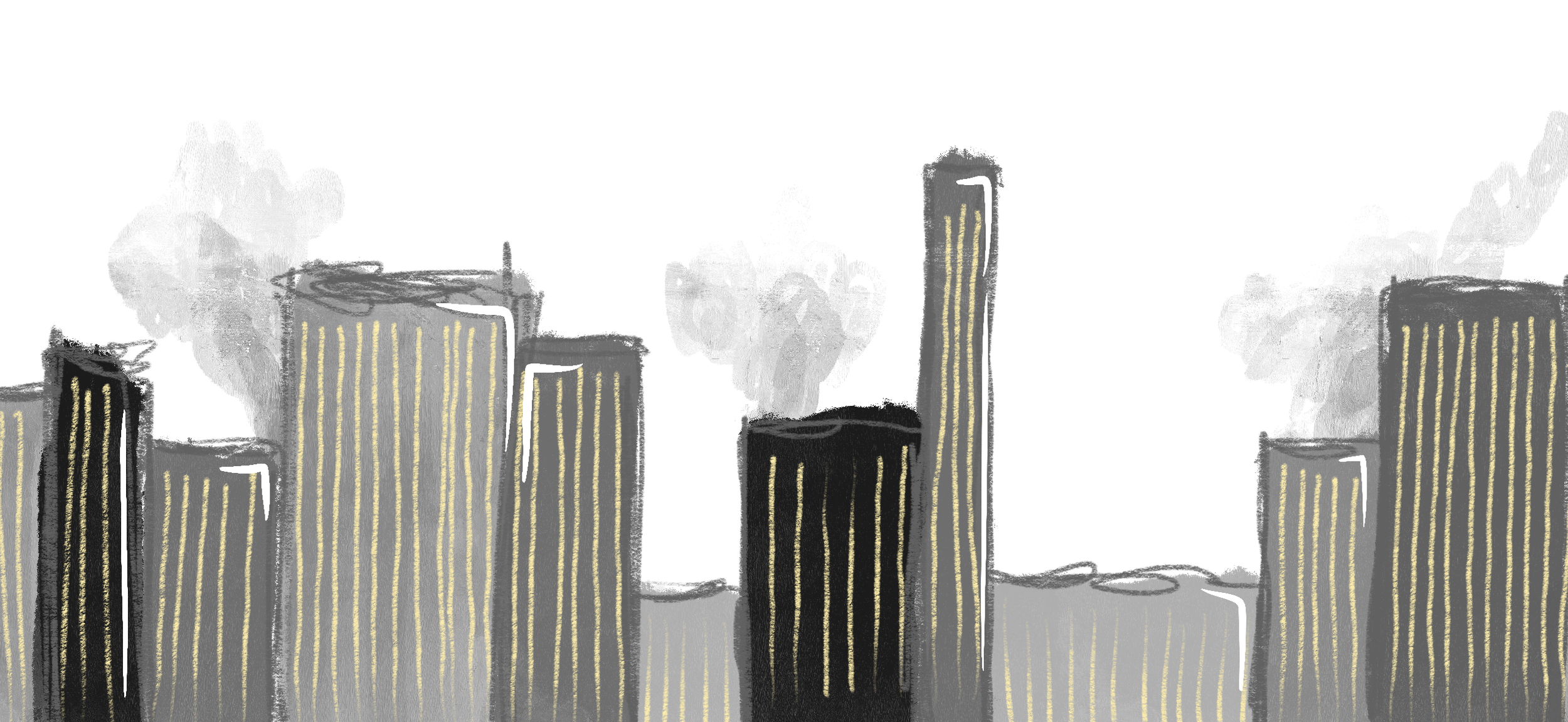A LETTER TO HAMMERTOWN FROM KINGSTON AND MAIN
There are grids
we live among and to see them
is to know ourselves.
Walking into the
variable energy availability
of the city’s
refracting densities,
my thoughts curve
to a more-deep occlusion,
squeezing hope from waste.
Maybe we’d imagine
the utility-led meshwork
of the neighbourhood’s
integrated power networks
to be coeval with the lake,
but a question asked
by the rusty trace
of burnt-out topsoil
trips up my naturalizing:
where did all the rig-pigs go?
We still swallow them while
passing through the building’s
battery room, or on
the wobbly streetcar line
at Kingston and Galloway,
ambient Walkman ghosts
wound through the causeway
of the cassette-slot
like air spun into
the shell-game procession
of mass-wind corridors.
I walk as far as I can
before the tape paces
my edge and I flip it.
And even if the motion
of my sad perplexity
marrows the tangents
of our predation, did we
save the Earth through
de-emissioned logistics
or did we learn to better
broth the bones of what’s left?
What do I do if I still
can’t imagine a world without oil?
Where the Earth is most torn,
corpsing accounts dial mood
to a rolling brownout
as I thrift the corners
of my right to repair,
magnetic tape unspooled
against the deparked curb,
the dumpster and its
non-infinite series
of discrete marvels
like griped black plastic
peeled across a Hammertown ditch.
Is there clarity
found in the loose change
of things as they concatenate
ryan fitzpatrick
When I was asked to contribute something to this zine about the legacy of Canada’s struggle to reach net zero emissions, I thought of this poem that I wrote in 2035. Maybe it’s the poem’s expression of the deep cynicism I felt at that historical moment, when it wasn’t clear whether the changes that governments and corporations were pursuing would make any real difference for the planet and our everyday lives. (I still feel some of that cynicism today, though am a little more hopeful in my old age). Maybe it was also the title’s address to Kingston and Main, the two intersecting streets in The Beaches neighbourhood in Toronto nearby where I lived. Maybe it was also the time I was spending walking through the neighbourhood with a refurbished Walkman and a handful of vintage tapes, thinking about the way the past overlaps with the present and future.
In titling the poem “A Letter to Hammertown,” I was cheekily addressing myself to Peter Culley, the Nanaimo, B.C. poet who wrote in a different moment about a different place, but who similarly expressed a kind of melancholy about the movements of capital across intimate spaces. The poem also takes cues and lines from George Oppen and William Wordsworth, laying out a palimpsest of writers. The poem’s opening lines are lifted almost directly from Oppen’s “Of Being Numerous,” changing Oppen’s “things” to the more expansive “grids.” I wondered about the systems that cradle us and the ways, at that moment, they seemed to be constantly changing. The city seemed to be constantly shifting underfoot, sometimes for good and sometimes not so good reasons. I think I wanted to grapple with what it feels like to be in that moment of transition, where a lot is changing but it’s unclear to what end.


